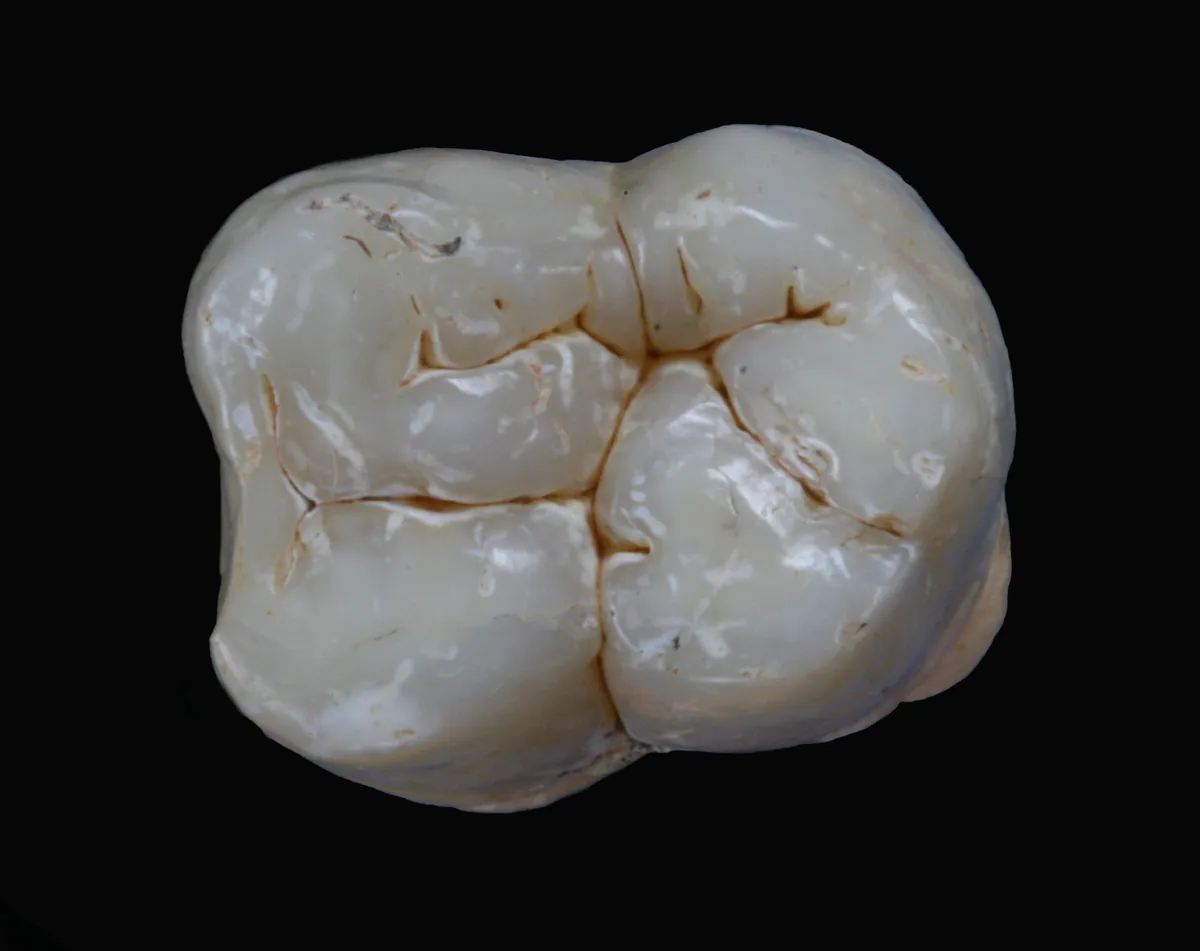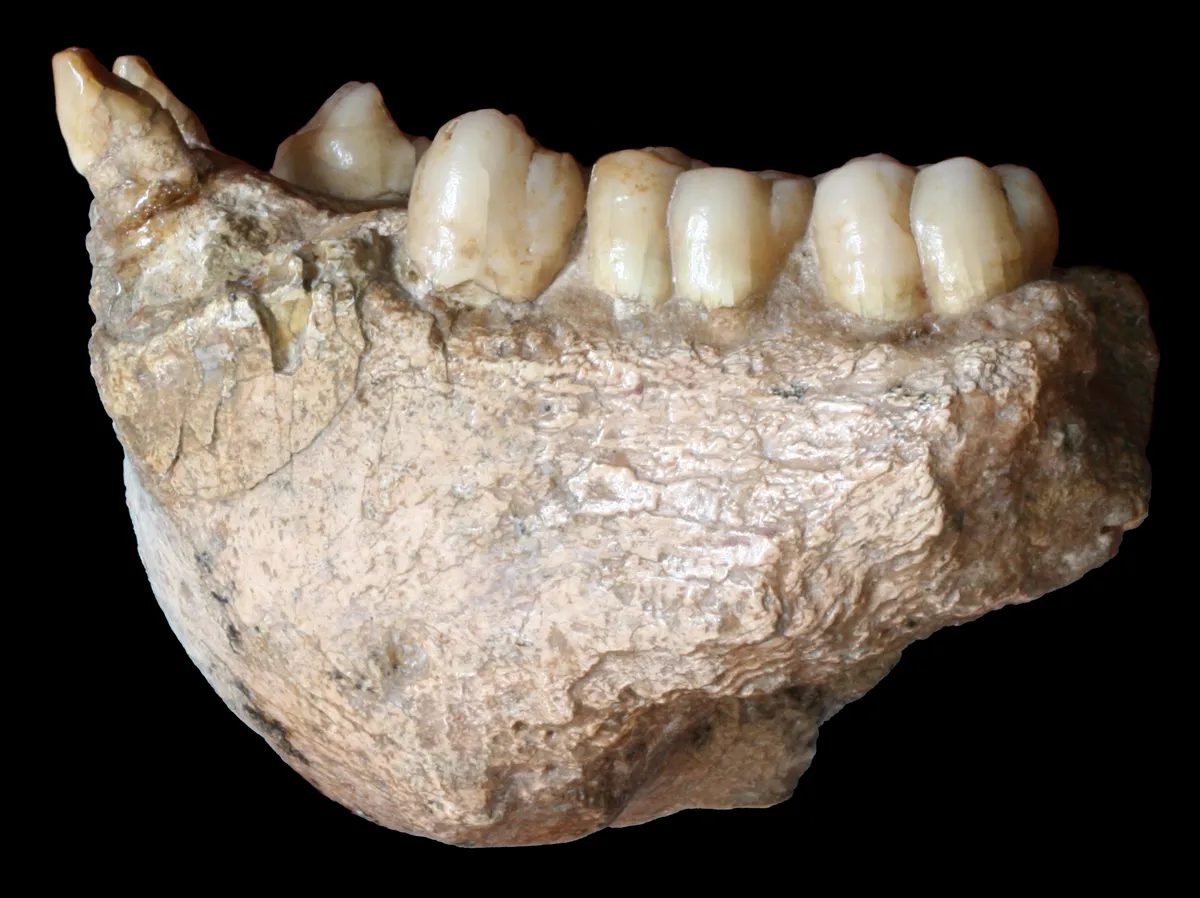If it were alive today, Gigantopithecus blacki would likely have towered above any human. It is thought to have been at least taller than the current largest apes, gorillas, and some estimates say that it could have been as much as 3m tall.
In a remarkable scientific advance, an international team of researchers has managed to analyse the proteome – the sequence of proteins expressed by an organism – of G. blacki, revealing previously unknown information about its ancestry and relation to modern great apes.
Published this week in Nature, the paper reveals that these proteins were extracted from a single fossilised tooth.

This is a very impressive feat for a couple of reasons. Firstly, the tooth was extremely old, having been preserved over 2 million years ago. It is much harder to obtain any molecular data from ancient fossils than newer ones, as it breaks down and degrades over time. DNA, for example, will only survive for a maximum of 1.5 million years, even under the best preservation conditions.
Proteins, however, last much longer than DNA, and the growing field of proteomics is capitalising on this resilience. Ancient proteins are being used more and more to answer questions about the history and evolution of humans and other animals.
This finding is also exciting because the fossil comes from a warm and humid environment – Chuifeng Cave, in a sub-tropical region of southern China.
“The warmer the environment, the quicker molecules break apart. So, in somewhere cold, like the UK, molecules survive longer than in a warmer place like northern Africa or the subtropics of southeast Asia,” explains Dr Frido Welker, lead author of the study.

It was previously thought unlikely that any usable molecular data could survive this long in such an environment. However, the fact that the fossils available were molars with thick enamel coverings is very significant.
"Dental enamel is extremely dense. Proteins within the enamel are therefore shielded a bit from the external environment. This enabled us to retrieve some molecular information for Gigantopithecus blacki, despite the fossil being preserved over 2 million years ago and it being from a very warm environment,” continues Dr Welker.
In fact, it is mostly from teeth alone that this species is known. The extinct ape, which once roamed the forests of Asia, was first discovered in 1935 when a German-Dutch palaeontologist found an isolated tooth in a Hong Kong pharmacy.
The entire fossil record of the species now includes thousands of other teeth but, aside from that, contains just 4 partial jaw bones. It is therefore difficult to know much about the anatomy of this species. However, the size of teeth indicate that the species was very large, and the structure of the teeth tells us that this ape was dependent on plant foods.

Scientists have also been able to estimate that the species went extinct between 300,000 – 100,000 years ago, possibly due to the loss of the forests on which they were dependent, because of climatic changes.
This recent study has expanded our limited knowledge of this mysterious species considerably. The protein sequence has revealed that G. blacki’s closest living modern relatives are orangutans, and that they were in fact a sister group to the orangutan Pongo genus.
The most important takeaway from this research may be that there are usable bio-molecules surviving to this age in subtropical environments. The age of the protein sequences extracted in this study is approximately 5 times greater than that of any previously published mammalian proteome or genome (complete DNA record), a truly remarkable leap forward in the study of ancient mammals.
The researchers hope that, in the future, similar methods can be used to study our own origins, by allowing us to delve deeper into our past than ever before.
Read the full paper in Nature.
Main image: artistic representation of Gigantopithecus blacki (eye close-up). © Ikumi Kayama (Studio Kayama LLC).
